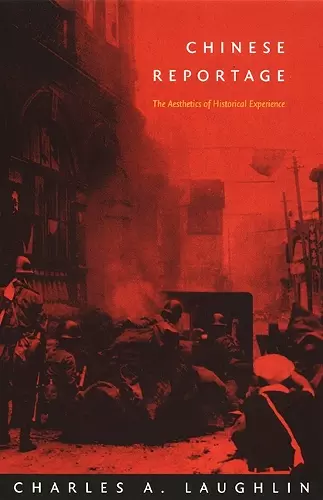Chinese Reportage
The Aesthetics of Historical Experience
Format:Paperback
Publisher:Duke University Press
Published:11th Oct '02
Currently unavailable, and unfortunately no date known when it will be back

Explores the origins of Chinese reportage (journalism) in the 1930s, 40s and 50s, and develops an understanding of the aesthetics that governed the creation of this literature.
Chinese Reportage details for the first time in English the creation and evolution of a distinctive literary genre in twentieth-century China. Reportage literature, while sharing traditional journalism’s commitment to the accurate, nonfictional portrayal of experience, was largely produced by authors outside the official news media. In identifying the literary merit of this genre and establishing its significance in China’s leftist cultural legacy, Charles A. Laughlin reveals important biases that impede Western understanding of China and, at the same time, supplies an essential chapter in Chinese cultural history.
Laughlin traces the roots of reportage (or baogao wenxue) to the travel literature of the Qing Dynasty but shows that its flourishing was part of the growth of Chinese communism in the twentieth century. In a modern Asian context critical of capitalism and imperialism, reportage offered the promise of radicalizing writers through a new method of literary practice and the hope that this kind of writing could in turn contribute to social revolution and China’s national self-realization. Chinese Reportage explores the wide range of social engagement depicted in this literature: witnessing historic events unfolding on city streets; experiencing brutal working conditions in 1930s Shanghai factories; struggling in the battlefields and trenches of the war of resistance against Japan, the civil war, and the Korean war; and participating in revolutionary rural, social, and economic transformation. Laughlin’s close readings emphasize the literary construction of social space over that of character and narrative structure, a method that brings out the critique of individualism and humanism underlying the genre’s aesthetics.
Chinese Reportage recaptures a critical aspect of leftist culture in China with far-reaching implications for historians and sociologists as well as literary scholars.
“Based on superior scholarship and written in a pleasant yet profound style, Charles A. Laughlin’s sensitive readings and surprising interpretations of little-known but highly intriguing texts open up important new vistas for all scholars of literature who oppose the restrictive concept of ‘univeral literary values’ and seek to replace it with methods that emphasize and bring out cultural and historical differences. By analyzing the aesthetics of reportage, Laughlin demonstrates that this unique and important genre of modern Chinese writing was much more than just a tool for political agitation but that it provided its substantial readership with a genuinely literary experience.”—Michel Hockx, SOAS, University of London
“This is the first full-length English study of Chinese reportage, following its development from the turn of the century to the founding of the People’s Republic. Charles A. Laughlin delineates the genesis and transformation of a genre that had a powerful impact on the making of Chinese literary and political modernity, and he inquires into the treacherous terms by means of which Chinese writers sought to understand reality and its representation. Theoretically provocative and historically engaged, this book will be of tremendous significance for anyone interested in modern Chinese literature, history, journalism, and politics.”—David Der-wei Wang, Columbia University
ISBN: 9780822329718
Dimensions: unknown
Weight: 635g
352 pages